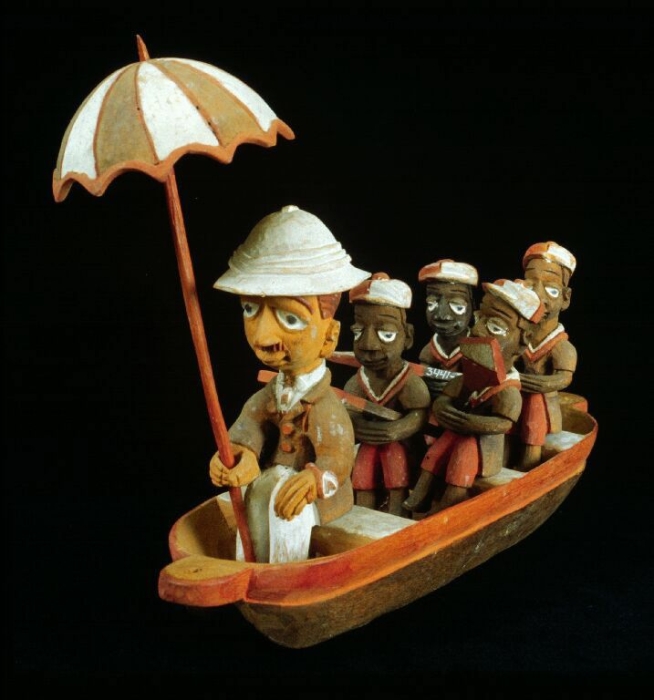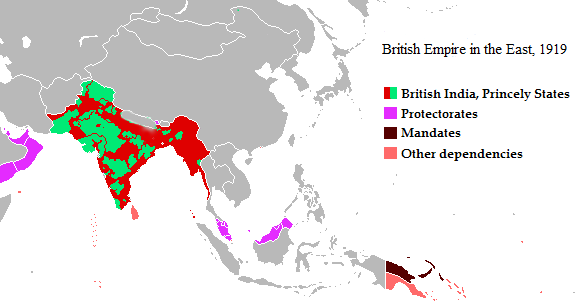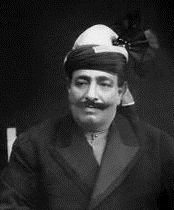|
North-West Frontier States Agency
The North-West Frontier States Agency was one of the colonial Agencies of British India exercising indirect rule. It comprised the Princely States associated with the North-West Frontier Province (now Khyber-Pakhtunkhwa, in Pakistan Pakistan ( ur, ), officially the Islamic Republic of Pakistan ( ur, , label=none), is a country in South Asia. It is the world's fifth-most populous country, with a population of almost 243 million people, and has the world's second-lar ...). Subagencies were the Dir, Swat and Chitral Agency and the Deputy Commissioner of Hazara acting as the Political Agent for Amb and Phulra. Princely States Then the only salute state was : * Chitral, title Mehtar, enjoying a Hereditary salute of 11-guns One then non-salute state would later outrank Chitral by Pakistani presidential grant of a Hereditary salute of 15-guns in 1966 : * Swat, title Wali The rest remained non-salute states : * Amb, title Nawab * Dir, title Nawab * Phulra(h), t ... [...More Info...] [...Related Items...] OR: [Wikipedia] [Google] [Baidu] |
Agencies Of British India
An agency of British India was an internally autonomous or semi-autonomous subdivision of India whose external affairs were governed by an agent designated by the Viceroy of India.Great Britain India Office. '' The Imperial Gazetteer of India''. Oxford: Clarendon Press, 1908. Description The agencies varied in character from fully autonomous self-governing dependencies such as princely states, where the agent functioned mainly as a representative of the Viceroy, to tribal tracts which were integral parts of the British Empire and where the agent was completely in charge of law and order. The agent of a protected tract or princely state usually lived outside the territory in his charge, as opposed to a Resident who usually lived within his confines and was frequently the District Collector of the adjoining British district. Civil and criminal justice in agencies were usually administered through locally made laws, and the Indian Penal Code was not applicable by default in th ... [...More Info...] [...Related Items...] OR: [Wikipedia] [Google] [Baidu] |
Indirect Rule
Indirect rule was a system of governance used by the British and others to control parts of their colonial empires, particularly in Africa and Asia, which was done through pre-existing indigenous power structures. Indirect rule was used by various colonial rulers: the French in Algeria and Tunisia, the Dutch in the East Indies, the Portuguese in Angola and Mozambique and the Belgians in Rwanda and Burundi. These dependencies were often called " protectorates" or "trucial states". By this system, the day-to-day government and administration of areas both small and large were left in the hands of traditional rulers, who gained prestige and the stability and protection afforded by the Pax Britannica (in the case of British territories), at the cost of losing control of their external affairs, and often of taxation, communications, and other matters, usually with a small number of European "advisors" effectively overseeing the government of large numbers of people spread over extensi ... [...More Info...] [...Related Items...] OR: [Wikipedia] [Google] [Baidu] |
Princely State
A princely state (also called native state or Indian state) was a nominally sovereign entity of the British Indian Empire that was not directly governed by the British, but rather by an Indian ruler under a form of indirect rule, subject to a subsidiary alliance and the suzerainty or paramountcy of the British crown. There were officially 565 princely states when India and Pakistan became independent in 1947, but the great majority had contracted with the viceroy to provide public services and tax collection. Only 21 had actual state governments, and only four were large ( Hyderabad State, Mysore State, Jammu and Kashmir State, and Baroda State). They acceded to one of the two new independent nations between 1947 and 1949. All the princes were eventually pensioned off. At the time of the British withdrawal, 565 princely states were officially recognised in the Indian subcontinent, apart from thousands of zamindari estates and jagirs. In 1947, princely states covered ... [...More Info...] [...Related Items...] OR: [Wikipedia] [Google] [Baidu] |
North-West Frontier Province (1901–55)
The North-West Frontier Province (NWFP; ps, شمال لویدیځ سرحدي ولایت, ) was a Chief Commissioner's Province of British India, established on 9 November 1901 from the north-western districts of the Punjab Province. Following the referendum in 1947 to join either Pakistan or India, the province voted hugely in favour of joining Pakistan and it acceded accordingly on 14th August, 1947. It was dissolved to form a unified province of West Pakistan in 1955 upon creation of One Unit Scheme and was re-established in 1970. It was known by this name until 19 April 2010, when it was redesignated as the province of Khyber Pakhtunkhwa following the passing of the Eighteenth Amendment to the Constitution of Pakistan by erstwhile President Asif Ali Zardari. The province covered an area of , including much of the current Khyber Pakhtunkhwa province but excluding the Federally Administered Tribal Areas and the former princely states of Amb, Chitral, Dir, Phulra and S ... [...More Info...] [...Related Items...] OR: [Wikipedia] [Google] [Baidu] |
Khyber Pakhtunkhwa
Khyber Pakhtunkhwa (; ps, خېبر پښتونخوا; Urdu, Hindko: خیبر پختونخوا) commonly abbreviated as KP or KPK, is one of the Administrative units of Pakistan, four provinces of Pakistan. Located in the Geography of Pakistan, northwestern region of the country, Khyber Pakhtunkhwa is the smallest province of Pakistan by land area and the Demographics of Pakistan, third-largest province by population after Punjab, Pakistan, Punjab and Sindh. It shares land borders with the Pakistani provinces of Balochistan, Pakistan, Balochistan to the south, Punjab, Pakistan, Punjab to the south-east and province of Gilgit-Baltistan to the north and north-east, as well as Islamabad Capital Territory to the east, Azad Jammu and Kashmir, Autonomous Territory of Azad Jammu and Kashmir to the north-east. It shares an Durand Line, international border with Afghanistan to the west. Khyber Pakhtunkhwa is known as a tourist hot spot for adventurers and explorers and has a varied landsca ... [...More Info...] [...Related Items...] OR: [Wikipedia] [Google] [Baidu] |
Pakistan
Pakistan ( ur, ), officially the Islamic Republic of Pakistan ( ur, , label=none), is a country in South Asia. It is the world's fifth-most populous country, with a population of almost 243 million people, and has the world's second-largest Muslim population just behind Indonesia. Pakistan is the 33rd-largest country in the world by area and 2nd largest in South Asia, spanning . It has a coastline along the Arabian Sea and Gulf of Oman in the south, and is bordered by India to the east, Afghanistan to the west, Iran to the southwest, and China to the northeast. It is separated narrowly from Tajikistan by Afghanistan's Wakhan Corridor in the north, and also shares a maritime border with Oman. Islamabad is the nation's capital, while Karachi is its largest city and financial centre. Pakistan is the site of several ancient cultures, including the 8,500-year-old Neolithic site of Mehrgarh in Balochistan, the Indus Valley civilisation of the Bronze Age, the most extens ... [...More Info...] [...Related Items...] OR: [Wikipedia] [Google] [Baidu] |
Hazara, Pakistan
Hazara (Hindko: هزاره, Urdu: ) is a region in northeastern Pakistan, falling administratively within Hazara Division of the Khyber Pakhtunkhwa province. It is dominated mainly by the Hindko-speaking Hindkowan people, who are the native ethnic group of the region and often called the " Hazarewal". History Name Evidence from the seventh-century Chinese traveller Xuanzang, in combination with much earlier evidence from the Hindu Itihasa the Mahabharata, attests that Poonch and Hazara District of Kashmir had formed parts of the ancient state of Kamboja, whose rulers followed a republican form of government. History since Alexander Alexander the Great and Ashoka the Great Alexander the Great, after conquering parts of the Northern Punjab, established his rule over a large part of Hazara. In 327 B.C., Alexander handed the area over to Abisaras (Αβισαρης), the raja of Poonch state. Hazara remained a part of the Taxila administration during the rule of the Maury ... [...More Info...] [...Related Items...] OR: [Wikipedia] [Google] [Baidu] |
Political Officer (British Empire)
The Indian Political Department (IPD), formerly known as the Foreign and Political Department of the Government of India, was a government department in British India. It originated in a resolution passed on 13 September 1783 by the board of directors of the East India Company; this decreed the creation of a department which could help “relieve the pressure” on the administration of Warren Hastings in conducting its "secret and political business". In 1843, Governor-General Ellenborough reformed the administration, organizing Secretariat of the Government into four departments – Foreign, Home, Finance and Military. The officer in charge of the foreign department was supposed to manage the "conduct of all correspondence belonging to the external and internal diplomatic relations of the government". Its political officers were responsible for the civil administration of frontier districts, and also served as British agents to rulers of Princely states. A distinction was mad ... [...More Info...] [...Related Items...] OR: [Wikipedia] [Google] [Baidu] |
Salute State
A salute state was a princely state under the British Raj that had been granted a gun salute by the British Crown (as paramount ruler); i.e., the protocolary privilege for its ruler to be greeted—originally by Royal Navy ships, later also on land—with a number of cannon shots, in graduations of two salutes from three to 21, as recognition of the state's relative status. The gun-salute system of recognition was first instituted during the time of the East India Company in the late 18th century and was continued under direct Crown rule from 1858. As with the other princely states, the salute states varied greatly in size and importance. The states of Hyderabad and Jammu and Kashmir, both with a 21-gun salute, were each over 200,000 km2 in size, or slightly larger than the whole of Great Britain; in 1941, Hyderabad had a population of over 16,000,000, comparable to the population of Romania at the time, while Jammu and Kashmir had a population of slightly over 4 million ... [...More Info...] [...Related Items...] OR: [Wikipedia] [Google] [Baidu] |
Chitral (princely State)
, status = Princely state in alliance with British India to 15 August 1947;Fully independent: 15 August 1947 – 6 October 1947 , official_languages = Persian (official, literary, and administrative language) Khowar (court, de facto language) , national_languages = , government_type = Monarchy , image_coat = Coat of arms of State of Chitral.svg , image_flag = Flag of State of Chitral.svg , flag_type = State flag , flag_border = no , capital = Chitral Town , year_start = 1320 , event1 = Raees dynasty , date_event1 = 1320 , event2 = Kator dynasty , date_event2 = 1571 , event3 = Subsidiary Alliance with British India , date_event3 = 1885 , event4 = Salute state , date_event4 = 1919 , event_end = Princely state of Pakistan , year_en ... [...More Info...] [...Related Items...] OR: [Wikipedia] [Google] [Baidu] |
Swat (princely State)
State of Swat (Urdu, ps, ; locally called as Dera Swat) was a kingdom established in 1849 that was ruled by chiefs known as Akhunds. It was then recognized as a princely state in alliance with the British Indian Empire between 1926 and 1947, after which the Akhwand acceded to the newly independent state of Pakistan. Swat continued to exist as an autonomous region until it was dissolved in 1969, and incorporated into Khyber Pakhtunkhwa Province (formerly called NWFP). The area it covered is now divided between the present-day districts of Swat, Dir, Buner and Shangla. History The Swat region has been inhabited for more than two thousand years and was known in ancient times as Udyana. The location of Swat made it an important stopping point for many invaders, including Alexander the Great and Sultan Mahmud of Ghazni. In the second century BCE, Swat formed part of the Buddhist civilisation of Gandhara. Swat was a center of Hinayana Buddhism and of the Mahayana scho ... [...More Info...] [...Related Items...] OR: [Wikipedia] [Google] [Baidu] |
Amb (princely State)
Amb or Kingdom of Amb also Feudal Tanawal (Urdu/ Persian: ''ریاست امب,'' romanized: ''Riyasat-e-Amb'') was a princely state in the present day Khyber Pakhtunkhwa region of Pakistan. It was a monarchy ruled by the Tanolis, a tribe of the Barlas Mughals of Turko-Mongol descent. They submitted to British colonial rule in the 1840s.Syed Murad Ali,"Tarikh-e-Tanawaliyan"(Urdu), Pub. Lahore, 1975, pp.84Ghulam Nabi Khan"Alafghan Tanoli"(Urdu), Pub. Rawalpindi, 2001, pp.244 Following Pakistani independence in 1947, and for some months afterwards, the Nawabs of Amb remained unaffiliated. At the end of December 1947, the Nawab of Amb state acceded to Pakistan while retaining internal self-government. Amb continued as a princely state of Pakistan until 1969, when it was incorporated into the West Pakistan (now Pakistan) province. The state was named after the town of Amb. In 1974, most of the territory of Amb state became the basin the Tarbela Dam. List of Nawabs of Amb ... [...More Info...] [...Related Items...] OR: [Wikipedia] [Google] [Baidu] |






